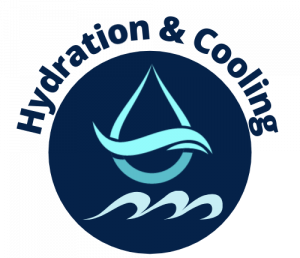A comprehensive guide to help coaches and athletic directors select the ideal football hydration station with 7 essential features to evaluate for team performance and safety.
_______________________________
Football Hydration Station Buying Guide: 7 Critical Features to Consider
Proper hydration is a non-negotiable aspect of football performance and player safety. Whether you’re outfitting a high school, college, or professional program, selecting the right hydration station can make all the difference during intense practices and game days. This guide walks coaches and athletic directors through the seven most critical features to evaluate when investing in a hydration solution that meets your team’s specific needs.
Why Your Hydration Station Choice Matters
Football is one of the most physically demanding sports, with players losing significant amounts of fluid during training and games. A well-designed hydration station isn’t just convenient—it’s essential for maintaining peak performance, preventing heat-related illness, and supporting quick recovery. The right system ensures your athletes have immediate access to water when they need it most, while the wrong choice can create bottlenecks, sanitation issues, and unnecessary maintenance headaches. To effectively address these challenges, football hydration station features should include easy dispensing mechanisms, ample storage capacity, and user-friendly designs that accommodate high volumes of players. By prioritizing these elements, teams can ensure athletes remain hydrated without sacrificing valuable practice or game time. Additionally, incorporating hygiene measures, such as touchless dispensers, can further enhance safety and efficiency during high-intensity activities.
7 Must-Evaluate Features for Football Hydration Stations
1. Capacity and Flow Rate
Football teams require substantial water volume, especially during two-a-days or games in hot weather. Look for stations that can serve your entire roster without constant refilling. The ideal station should deliver a high flow rate that allows multiple players to hydrate simultaneously during brief breaks. Consider how many gallons your unit can hold and how quickly it can dispense—a full team needs access within a typical timeout or quarter break.
2. Portability and Durability
Your hydration station will travel from practice fields to game venues and withstand years of heavy use. Evaluate the construction quality, with special attention to materials that resist cracking, denting, and UV damage. Wheels should be rugged enough for various terrains, from smooth turf to gravel pathways. Handle design and weight distribution matter too—staff should be able to maneuver the station without strain.
3. Sanitation Features
Team hydration systems must maintain water quality and prevent cross-contamination. Seek designs with individual drinking nozzles, protective caps, or personal bottle filling stations. Some advanced models include antimicrobial components or UV purification technology. The best stations make cleaning straightforward with accessible components and drainage systems for complete emptying between uses.
4. Temperature Control
Cool water improves taste and enhances hydration compliance among athletes. Evaluate the insulation quality and how long the station maintains desired temperatures in extreme conditions. Some premium models offer active cooling capabilities rather than just passive insulation. Consider whether your regional climate and typical practice conditions warrant this investment.
5. Customization Options
Many programs prefer hydration stations that display team colors and logos. Beyond aesthetics, customization can include modular components that adapt to different needs—from practice drills to game day setups. Check whether manufacturers offer personalization and if you can reconfigure the station as your program evolves.
6. Ease of Maintenance
The practical reality is that equipment managers and staff need stations that don’t create additional work. Assess how easily tanks can be filled, emptied, and cleaned. Replaceable parts availability matters too—can you quickly swap out a damaged nozzle, or will you need a whole new system? The best stations balance sophisticated features with straightforward maintenance requirements.
7. Budget Considerations and Longevity
While initial price points vary widely, the true value comes from durability and function over time. Calculate the per-season cost by dividing the purchase price by expected years of service. Factor in any additional expenses like replacement parts, winterization supplies, or special cleaning solutions. Remember that insufficient hydration can impact performance and safety—making this an investment in your program’s success.
Making Your Final Decision
After evaluating these seven critical features, create a comparison sheet for your top contenders. Involve key stakeholders—including coaches, equipment managers, and even veteran players—in the final decision. The right hydration station aligns with your program’s specific needs while providing reliable service season after season.
Ready to Upgrade Your Team’s Hydration System?
Our hydration specialists can help you select the perfect station based on your team size, facility setup, and specific requirements. Contact us for a personalized consultation to ensure your athletes have access to the hydration they need, when they need it. Our hydration specialists will guide you through the various options available, highlighting the benefits each can bring to your organization. With features tailored to different environments, our sports hydration station features ensure that your athletes can hydrate efficiently and effectively. Trust us to equip your team with the best solutions to maintain optimal performance and wellness.
Get expert advice on the right hydration solution for your football program today.
